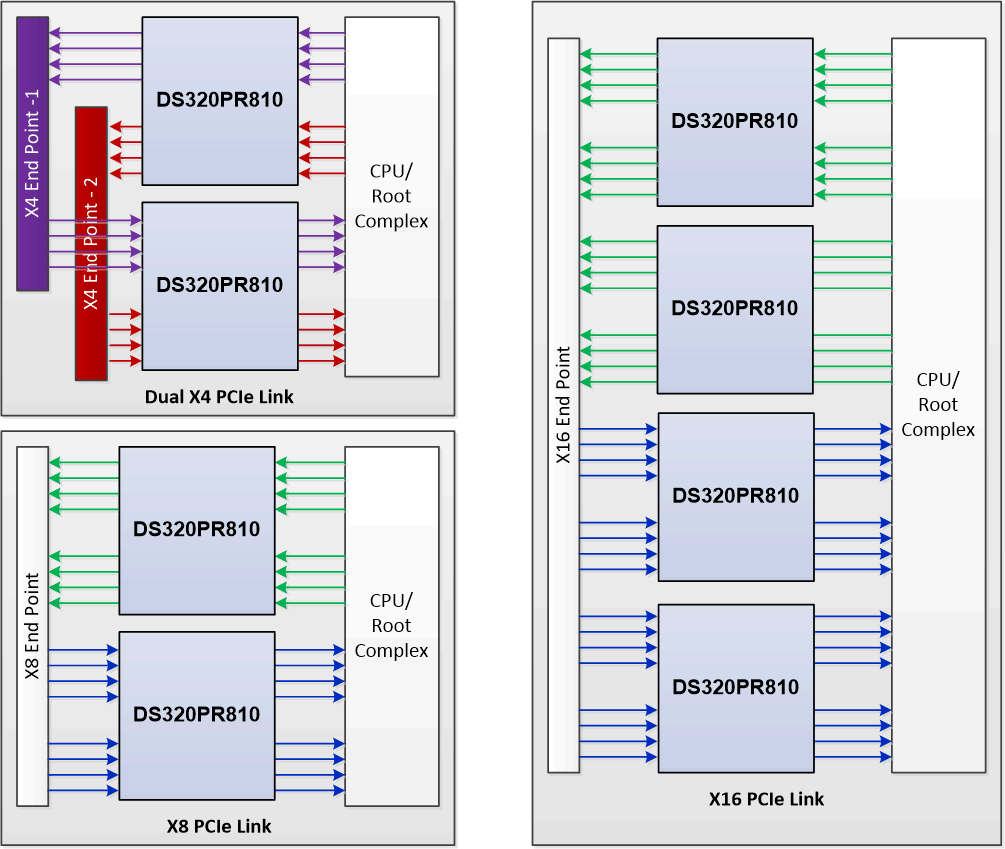SNLS668 August 2022 DS320PR810
PRODUCTION DATA
- 1 Features
- 2 Applications
- 3 Description
- 4 Revision History
- 5 Pin Configuration and Functions
- 6 Specifications
- 7 Detailed Description
- 8 Application and Implementation
- 9 Power Supply Recommendations
- 10Layout
- 11Device and Documentation Support
- 12Mechanical, Packaging, and Orderable Information
Package Options
Mechanical Data (Package|Pins)
- NJX|64
Thermal pad, mechanical data (Package|Pins)
Orderable Information
8.2 Typical Applications
The DS320PR810 is a PCI Express linear redriver that can also be configured as interface agnostic redriver by disabling its Rx detect feature. The device can be used in wide range of interfaces including:
- PCI Express 1.0, 2.0, 3.0, 4.0, and 5.0
- Ultra Path Interconnect (UPI) 1.0 and 2.0
- DisplayPort 2.0
 Figure 8-1 PCI
Express x4, x8
and x16 Use Cases Using DS320PR810
Figure 8-1 PCI
Express x4, x8
and x16 Use Cases Using DS320PR810
Note: all eight channels of the DS320PR810 flow in same direction. Therefore, if the device is used for dual x4 configuration with two devices, then PD0 of both devices need to be connected together to implement PCIe state machine for the first x4 link while PD1 for the second x4 link.